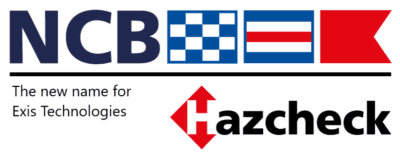This summary provides an overview on some of the updates being introduced in the Amendment 41-22 edition of the IMDG Code which may be used on an optional basis from 1 January 2023.
There is a general 12-month transitional period from 1st January 2023 to 31st December 2023 during which the previous amendment can continue to be used.
These notes are intended to provide a brief overview of the changes being introduced and should not be regarded as a complete listing of amendments. Reference must be made to the text of Amendment 41-22 for full details of all the amendments and applicable provisions.
IMDG Code Free Summary of Changes 41-22 – Brief summary
- Again, not an overly onerous set of changes with no major headlines
- Harmonised with the update to Model regulations, 22nd edition
- Chapter 1.2: Definitions: there are lots of changes to existing entries and the following new definitions: IAEA Regulations, inner vessel, pressure receptacle shell, and service equipment
- Part 2: Classification – In chapters 2.4 and 2.5 there are new technical names listed for one self-reactive substance and three organic peroxides.
- Part 3: DGL – There is one new addition, UN 3550 COBALT DIHYDROXIDE POWDER, containing not less than 10% respirable particles, class 6.1.
Two existing numbers, UN 1169 EXTRACTS, AROMATIC, LIQUID and UN 1197 EXTRACTS, FLAVOURING, LIQUID are merged, becoming UN 1197 EXTRACTS, LIQUID, for flavour or aroma.
UN 1891 ETHYL BROMIDE changes class from class 6.1 to class 3, sub-hazard 6.1. The LQ, EQ and EmS values change as a result.
UN 3527 (PGII and PGIII), POLYESTER RESIN KIT, solid base material, changes ‘E0’ to now read ‘See SP340’
The distinction between strong and weak acids is deleted. All entries with SGG1a strong acid now have SGG1 acid. UN 1439 AMMONIUM DICHROMATE, the only entry with SG75 Stow “separated from” SGG1a – strong acids, now has SG35 and needs to be separated from all acids.
- Chapter 3.3: Special provisions: There are new entries, SP396 for UN 3538, ARTICLES CONTAINING NON-FLAMMABLE, NON-TOXIC GAS, N.O.S., SP 397 for UN 1003, AIR, COMPRESSED and SP398 for UN 1012 BUTYLENE. There are minor wording changes to special provisions 188 and 225.
- Chapter 4.1: Packing instructions – There are various notes added to several packing instructions to implement the new sentence added to 4.1.3.3 which clarifies that when items other than UN packages are used they are not subject to the usual 400 kg limit.
P200 has new provisions for mixtures of fluorine and inert gases. The LC50 values are updated in table 2 for UN 1008, 2196 and 2198, and for the latter two this increases the types of pressure receptacle that may be used.
P621 part (1) now allows non-removable head drums and boxes.
IBC07 has a new special packing ‘B40’ added providing use of flexible IBCs (13H3 and 13H4) for the new UN 3550
- Part 5: Consignment – The requirement to show the telephone number on the lithium battery mark is now removed, with a transitional period until the end of 2026.
‘Molten’ substances must now be identified as part of the information that supplements the PSN in the dangerous goods description
There is a new generic requirement to ensure that in all instances where a special provision requires additional information this is noted on the transport document
- Part 6: Construction and testing of packagings – There are numerous changes in Part 6 concerning the design, construction, and testing of packagings, IBCs, tanks etc. These changes are in the main to clarify the meaning of the requirements and to the terminology used. The changes are extensive in chapter 6.2 and there a brand-new chapter 6.10 is added covering the design construction, inspection and testing of portable tanks with shells made of fibre-reinforced plastics (FRP) materials.
- Chapter 7.2: Segregation – In line with the deletion of the distinction between ‘Strong acids’ and ‘Acids, segregation code ‘SG75’ is removed
This IMDG Code Free Summary of Changes 41-22 summary was produced by Exis Technologies, supplier of Hazcheck Systems for compliance in the management of dangerous goods in sea transport and e-learning courses for the transport industry. Exis has been part of the NCB Group since 2018 and together their not for profit mission is the Safety of Life and Cargo at Sea.
The IMDG Code is produced by the International Maritime Organization.
IMPORTANT:
This is a brief guide to the changes only. Please refer to the IMDG for a complete list of all changes in this Amendment.
Exis Technologies accepts no responsibility for errors or omissions.
Download the DETAILED SUMMARY OF CHANGES here







